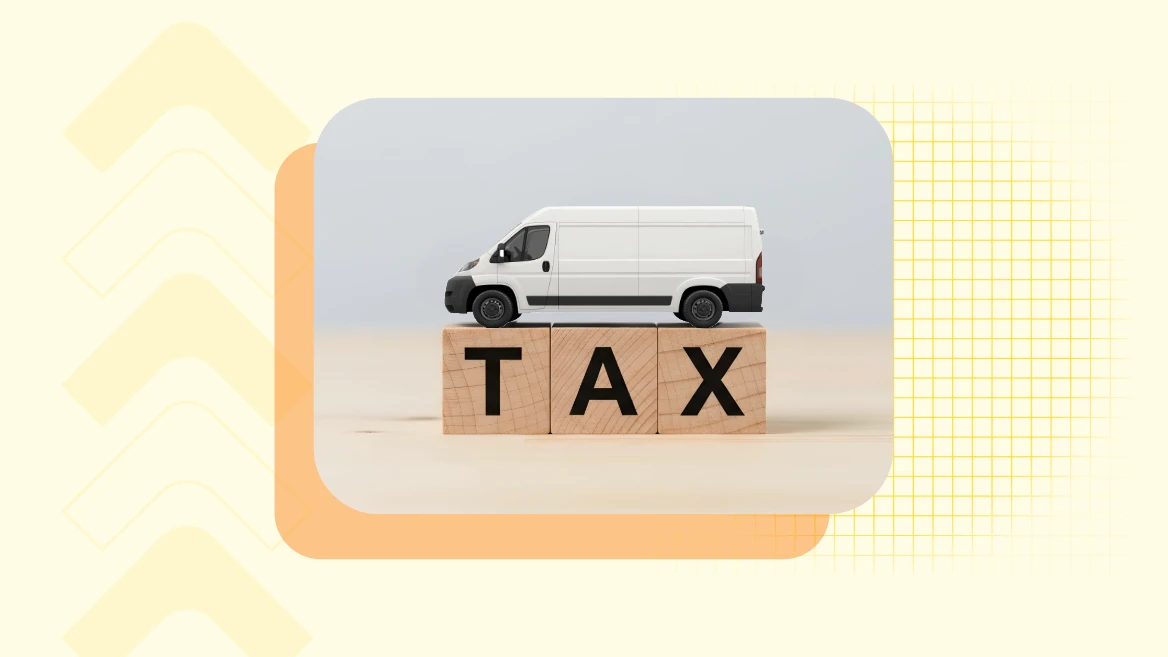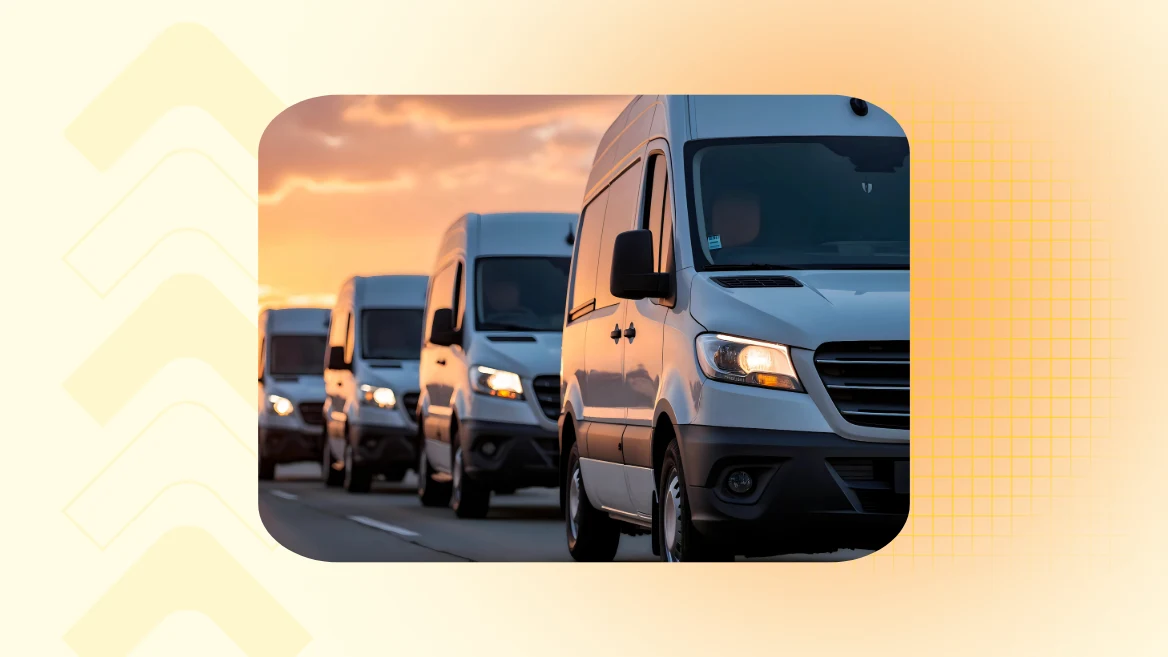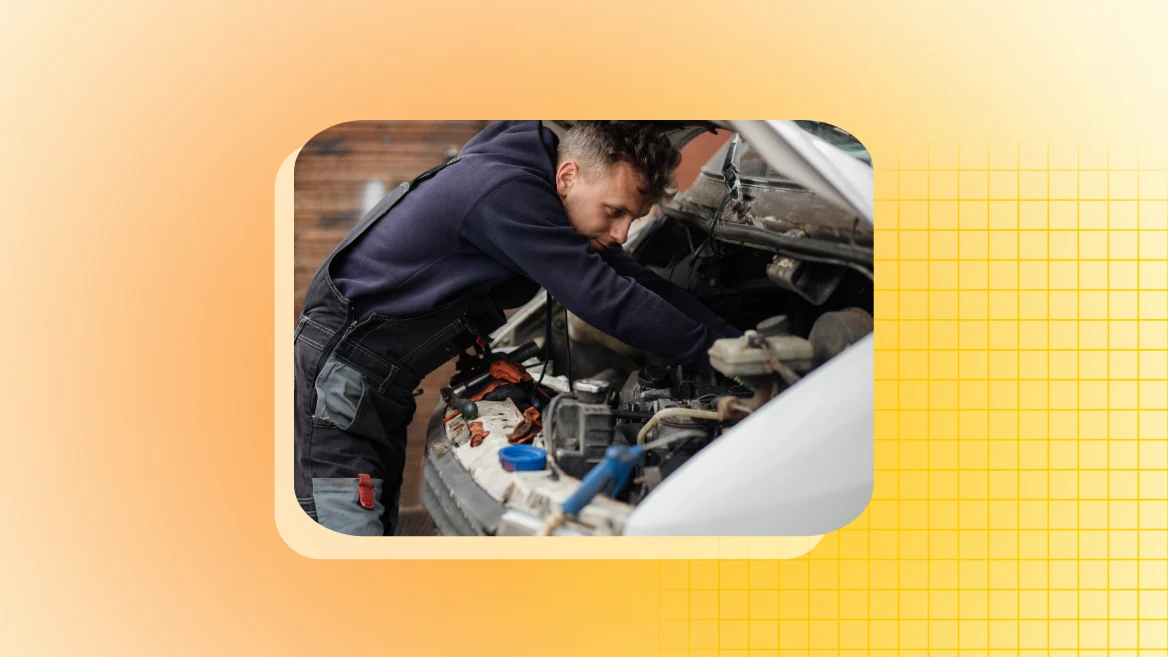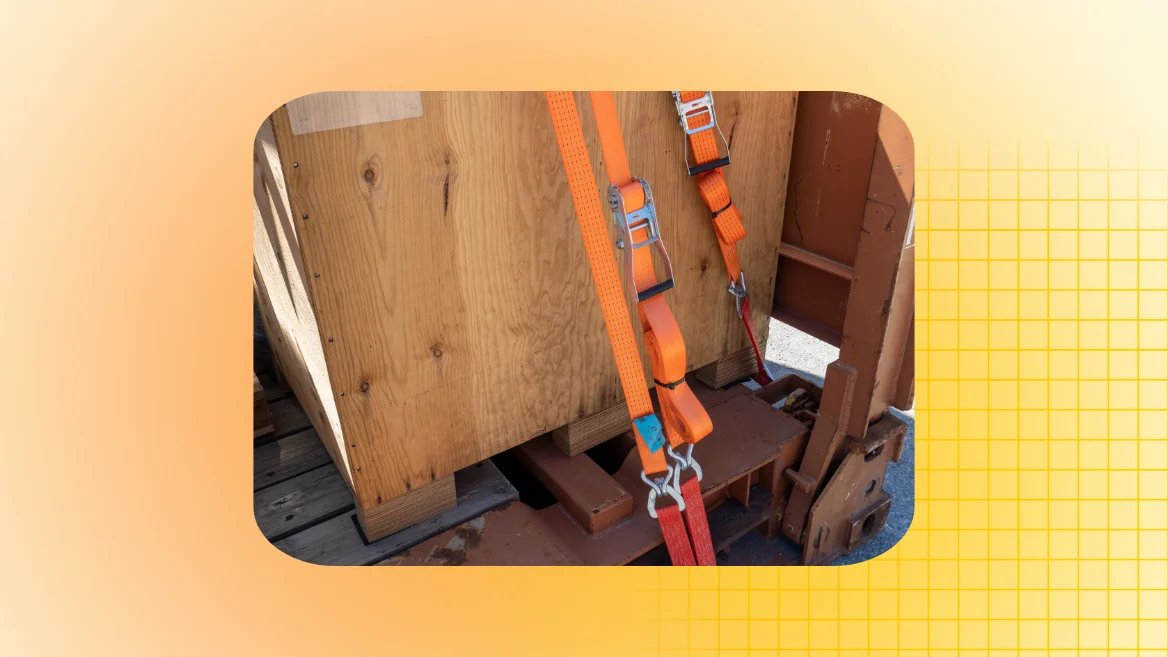If you own a van for courier work, you’ll already know about fuel, insurance, and regular maintenance. Another fixed cost you can’t ignore is van road tax.
The official name is Vehicle Excise Duty (VED), but most people still call it road tax. Unlike cars, vans usually fall into flat-rate tax bands. That means once you know which category your van sits in, it’s straightforward to work out what you’ll pay each year.
In this guide, we’ll explain how road tax for vans works, who it applies to, how much you’ll need to pay, and what exemptions exist. We’ll also put it in context for couriers who depend on their vans to keep earning.
What we’ll cover
Get access to 15,000+ courier loads a day on Courier Exchange
Be your own boss. Set your own hours. Make your own money.
Understanding van road tax
Before you can work out how much Vehicle Excise Duty you’ll pay, you need to know what van tax actually covers and how the DVLA decides whether a vehicle qualifies as a van. These definitions matter because they affect which rate applies to your vehicle.
What is van road tax?
Van tax is a yearly charge for driving or keeping a van on UK roads. The money goes into government funds that support road upkeep and related services.
The main difference between car tax and van road tax is how it’s calculated. Cars are usually taxed based on emissions, but vans are simpler. Most fall into flat-rate bands, so all vans in the same category pay the same amount, regardless of CO₂ output.
What counts as a van?
The DVLA defines a van as a light goods vehicle with a maximum gross weight of 3,500kg. Anything heavier is classed as a lorry and follows HGV tax rules.
Some vehicles cause confusion, especially double-cab pickups. If they can carry a payload of over one tonne, they usually count as vans. If they carry less, they can be taxed as cars.
For couriers, most delivery vehicles from small panel vans to long wheelbases fall firmly into the van category. That includes the popular courier van types and sizes often seen on platforms like Courier Exchange.
2025 van tax rates explained
Once you know your van is classed as a light goods vehicle, the next step is understanding how tax is calculated.
Rates depend mainly on when your van was registered, with a few exceptions for specific emission standards and electric vans.
How van tax is calculated
The rate you pay depends mainly on when your van was first registered.
- Vans registered before 1 March 2001 are taxed by engine size. Those with engines up to 1549cc now pay £220 a year, while larger engines pay £360.
- Vans registered on or after 1 March 2001 usually pay the standard light goods vehicle rate of £345. This covers the majority of vans used by couriers today.
- Euro 4 vans (registered 1 March 2003 to 31 December 2006) and Euro 5 vans (registered 1 January 2009 to 31 December 2010) qualify for a reduced rate of £140.
- From April 2025, electric vans are no longer exempt. They are taxed at the same rate as other vans in their category — so £345 for most, or £140 if they fall into Euro 4 or Euro 5.
Current van tax rates (2025)
Here’s a simple breakdown of the latest van tax rates as of April 2025:
| Vehicle type | Common vans | Annual rate |
|---|---|---|
| Pre-2001 engine ≤1549cc | Peugeot Partner, Citroën Berlingo, small Ford Transit | £220 |
| Pre-2001 engine >1549cc | Ford Transit, Mercedes Sprinter, larger vans of the time | £360 |
| Light goods (post-2001) | Ford Transit, Mercedes Sprinter, Vauxhall Vivaro, Renault Trafic, Fiat Ducato, Toyota Proace | £345 |
| Euro 4 vans (2003–2006) | VW Transporter, Peugeot Expert, Citroën Dispatch | £140 |
| Euro 5 vans (2009–2011) | VW Transporter, Renault Trafic, Vauxhall Vivaro | £140 |
| Electric vans | Ford E-Transit, Mercedes eSprinter, Vauxhall Vivaro-e | Same as above rates |
Euro 4 and Euro 5 vans pay £140 only if registered in the qualifying windows (2003–2006 for Euro 4, 2009–2010 for Euro 5).
From April 2025, electric vans are no longer £0. They are taxed at the same rate as other vans in their category (e.g. £345 standard, or £140 if Euro 4/5).
Courier-specific guidance
Most courier van road tax bills sit at £345 per year. That’s the standard rate for modern vans. For many drivers, that’s the figure to budget for.
If you’re running an older vehicle, costs may be higher or lower depending on its registration date. Electric vans still offer savings overall, especially when combined with lower courier van diesel costs.
Couriers must stay compliant, because penalties for non-payment can affect your ability to work. Without a taxed van, you can’t take on jobs or keep your profile active on courier platforms.
Paying and managing your van tax
Knowing the rate is one thing, but paying it on time and managing it alongside other costs is just as important.
The DVLA offers flexible payment options, and there are a few exemptions that might apply to certain vans.
How to pay
You can pay online through the DVLA, in-person at a local Post Office, or set up a Direct Debit. Payment can be made annually, every six months, or monthly.
Monthly and six-monthly options add a surcharge, so paying for the year in one go is cheaper. Some couriers prefer monthly to spread out the cost, especially if you already budget for courier insurance and fuel cards in the same way.
Exemptions and discounts
Some vans don’t need tax. Historic vehicles over 40 years old and vans used to transport disabled passengers may be exempt.
Electric vans are no longer fully exempt from April 2025. They follow the same rates as other vans in their category, though they still benefit from fuel and ULEZ savings.
If you’re not using your van on public roads, you can make a Statutory Off-Road Notification (SORN) with the DVLA. This means you won’t pay van road tax while it’s off the road, though you can’t drive it until it’s taxed again.
Practical tips for couriers
Couriers often juggle multiple running costs: courier van maintenance, insurance, MOTs, and fuel. Syncing renewal dates can help you avoid missed payments. Many drivers align Vehicle Excise Duty renewal with their MOT and insurance to handle everything at once.
Keeping a reminder in your calendar or using DVLA’s email alerts can stop you missing deadlines. If you’re planning to buy a second-hand courier van, always check when the tax is due before completing a purchase.

Penalties, enforcement, and wider costs
Failing to pay your van road tax doesn’t just mean an overdue bill. The DVLA actively monitors vehicles, and penalties can cause major disruption to your work.
It’s worth knowing the risks and where road tax fits into the bigger financial picture of running a van.
What happens if you don’t tax your van
Driving without tax carries real risks. DVLA uses automatic number plate recognition (ANPR) to check vehicles. If your van isn’t taxed, you can receive an instant fine of up to £1,000.
The DVLA also has the power to clamp or even seize untaxed vans. For a courier, losing access to your vehicle means lost income and missed jobs.
VED in the bigger picture
Van road tax is only one part of the cost of running a courier business. Compared to fuel, insurance, and MOT costs, it’s relatively predictable. But you still need to account for it when planning cash flow.
Add in things like van breakdown cover, ULEZ or congestion charges in some cities, and the cost of tyres or servicing, and it’s easy to see why managing outgoings matters.
Courier drivers must balance these with income from jobs, especially if you’re doing owner-driver courier jobs.
The future of van road tax
The way vans are taxed today might not be the same tomorrow.
With electric vans becoming more common, government policy will eventually need to adapt.
For now, though, there are clear benefits for those ready to switch.
EV adoption and government policy
From April 2025, electric vans are taxed at the same rate as other vans in their class. Even so, they remain attractive for both owner-drivers and fleets thanks to lower running costs and fewer clean air zone charges.
Government policy may change as more vans go electric. The flat-rate system could shift in the coming years, but nothing is confirmed yet.
What it means for couriers
For couriers, adopting an electric van early can cut costs. Lower fuel outgoings, no VED, and fewer ULEZ charges add up. Plus, some simple eco-friendly van upgrades can improve efficiency, even for diesel vans.
Whether you own or are hiring a courier van, tax rules apply. The only difference is that a hire company usually covers the VED cost in the rental price.
Over time, the industry will shift towards electric fleets. And with that, expect new tax bands and possible changes to current exemptions.
Keeping updated means you won’t face surprises.
In summary
Most courier drivers pay the flat £345 rate each year for van road tax. The system is simple compared to car tax, but you still need to know where your vehicle sits. Electric vans now pay the same rate as other vans, though they still save money through cheaper running costs.
Staying on top of payments protects your income, because without tax you can’t work. For couriers, keeping a van legal is as important as fuel in the tank. Whether you own, rent, or are thinking about upgrading to a new van, van road tax should always be part of your running cost calculations.
Get access to 15,000+ daily loads on Courier Exchange
Be your own boss. Set your own hours. Make your own money.
Van road tax FAQs
What is the current van road tax rate in 2025?
The standard rate for most vans registered after 2001 is £345 per year.
Is van tax cheaper than car tax?
Yes. Car tax is based on emissions, which means high-emission cars pay more. Vans use flat rates, so the system is simpler and often cheaper.
How much is road tax for electric vans?
From April 2025, electric vans are taxed the same as other vans in their category. Most pay £345, while some in Euro 4 or Euro 5 registration windows pay £140.
Do courier vans pay more road tax?
No. Courier vans follow the same rates as other vans. The only difference is how often you use the van, which may affect wear, fuel, and servicing.
Can I pay van road tax monthly?
Yes. You can set up a Direct Debit for monthly payments, though it costs slightly more than paying annually.
What happens if I don’t tax my van?
You can face fines, clamping, or seizure by the DVLA. For couriers, this means you can’t take on work until the van is legal again.



